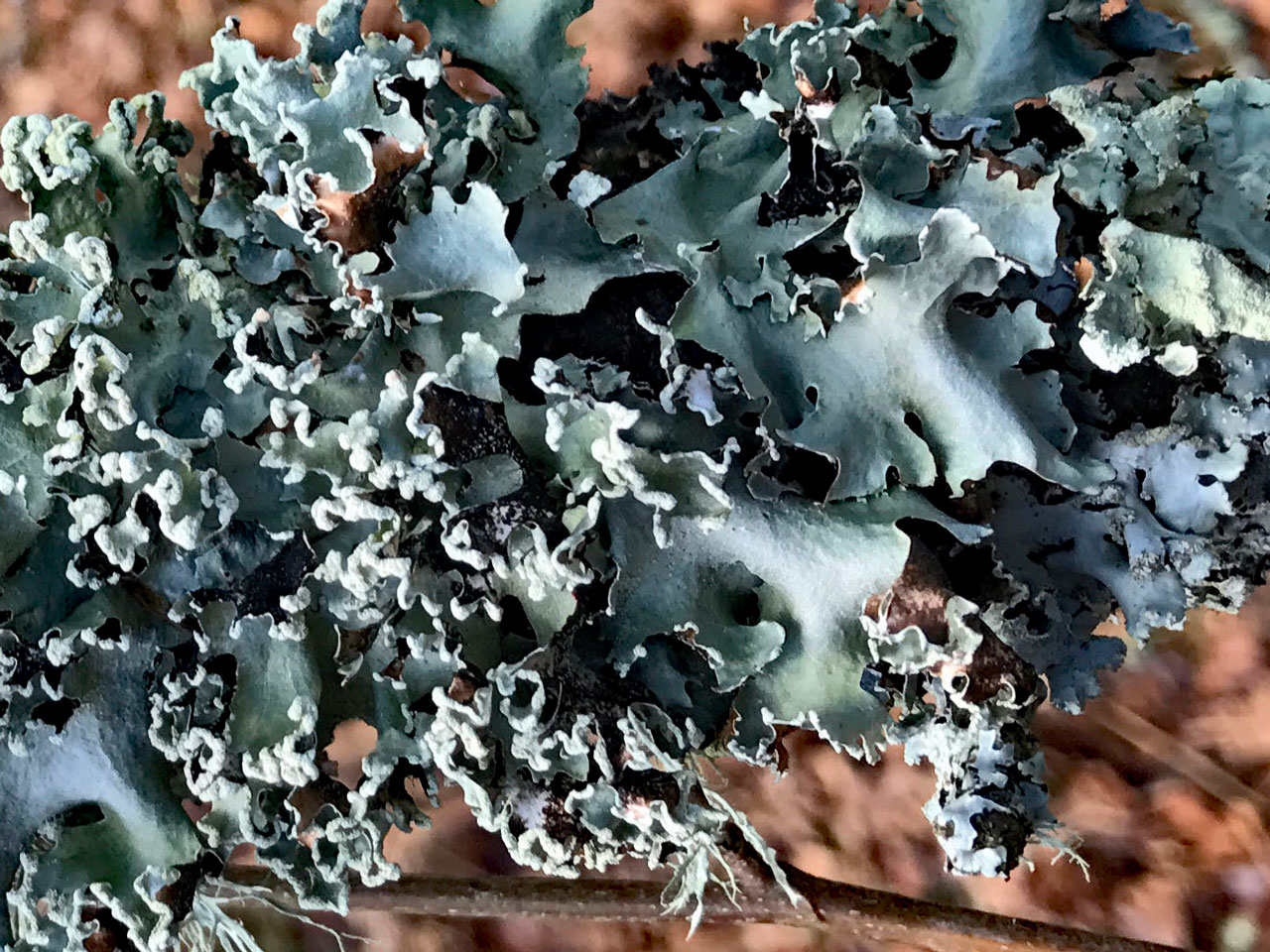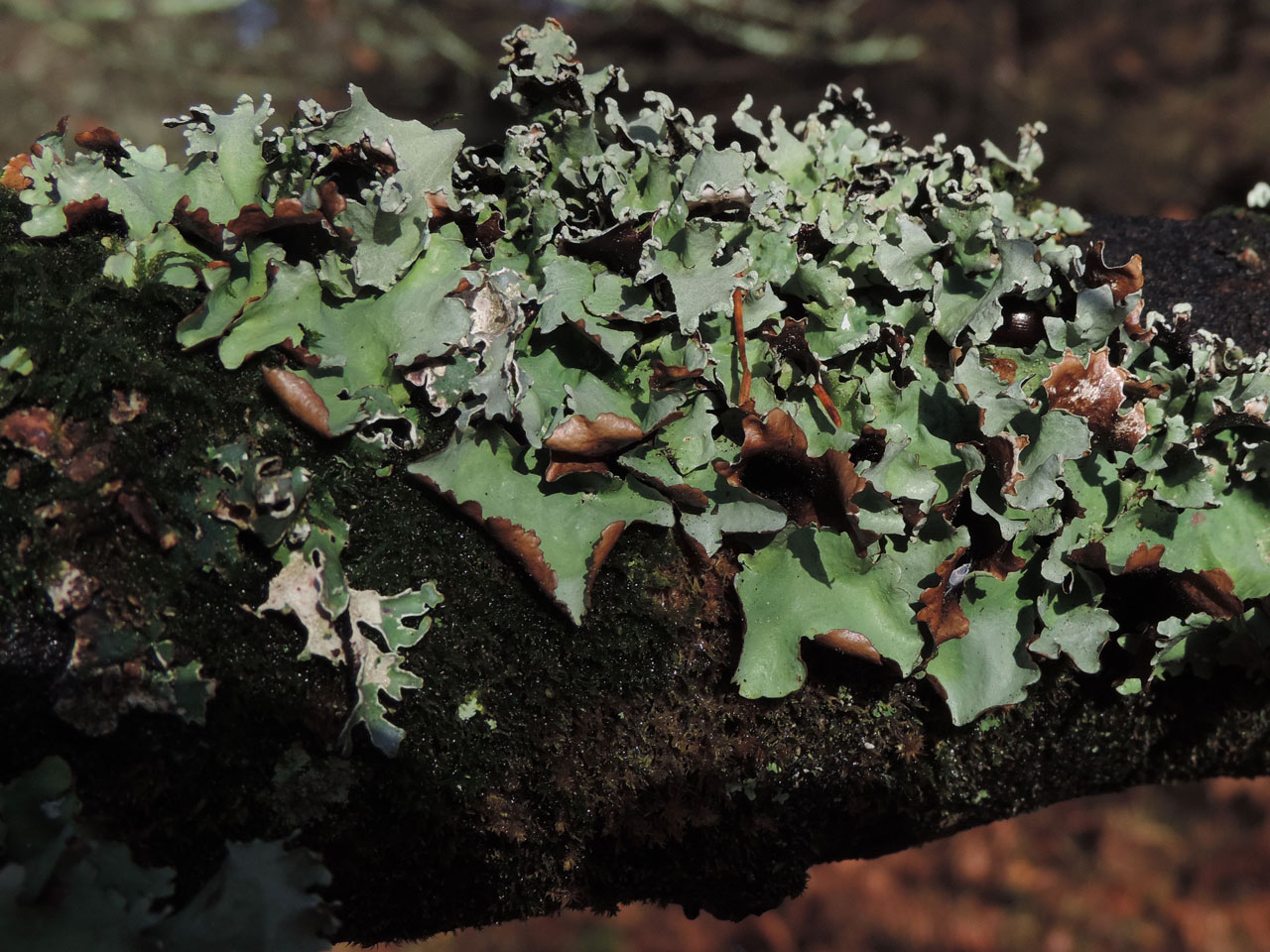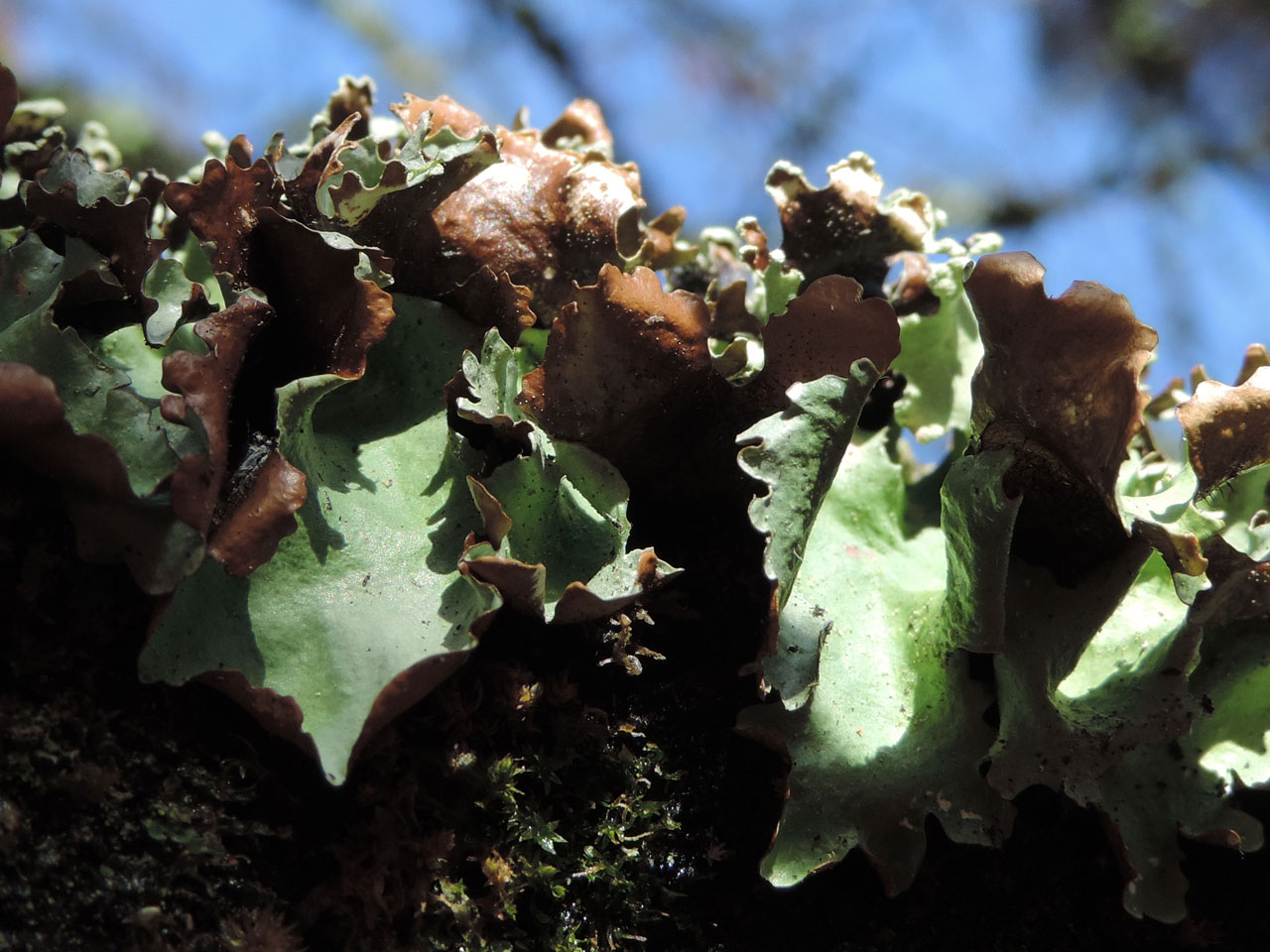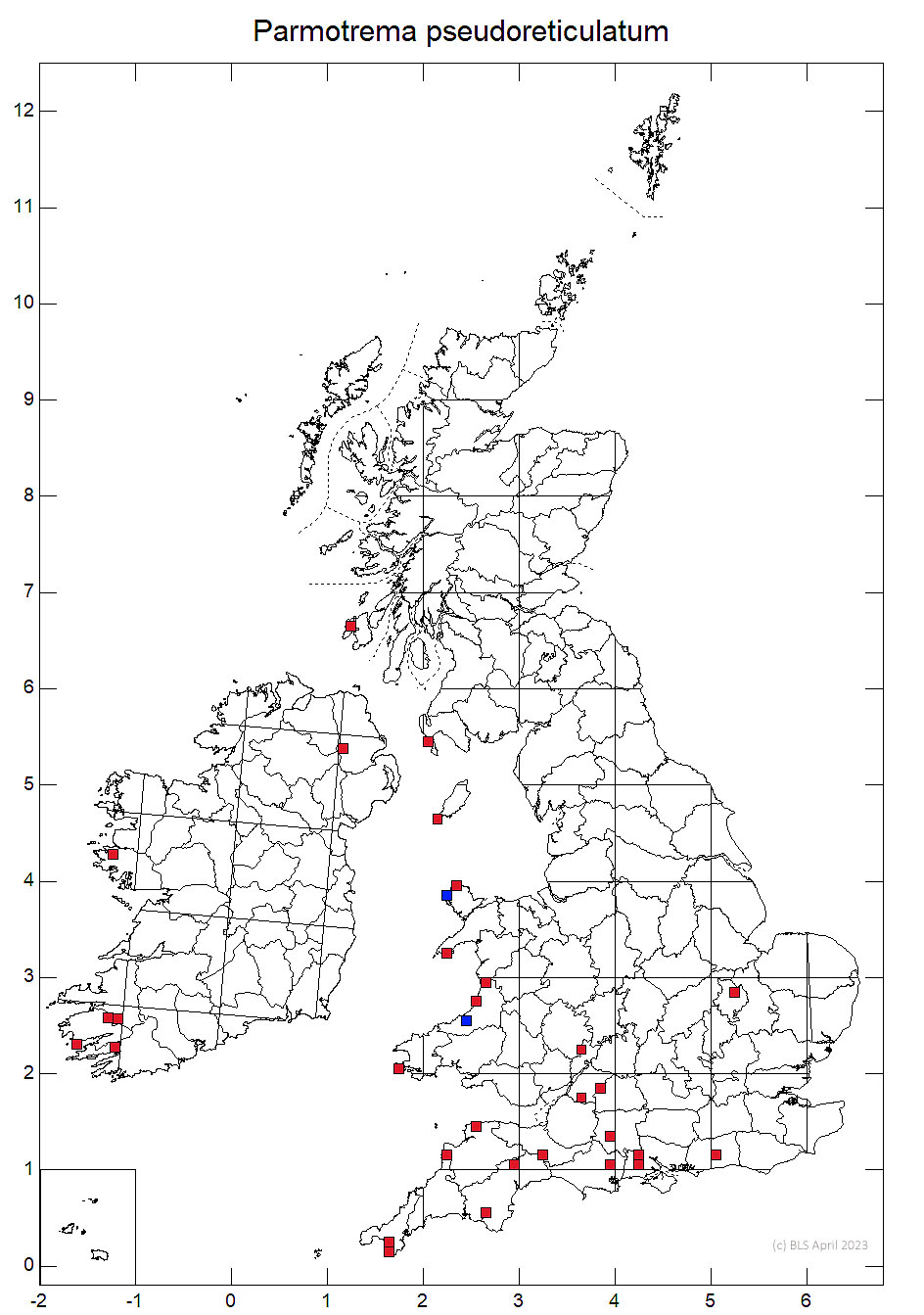Parmotrema pseudoreticulatum
Similar to Parmotrema reticulatum, but with a the network of white lines (maculae) very fine and needing a lens to see clearly, along with a wide marginal zone free of rhizines on the underside and never having thin upright lobes with capitate soralia. Separated from from P. perlatum by the network of hair-line cracks on the upper surface and by the K+ yellow→orange medulla (salazinic acid). The distributional and ecological differences with Parmotrema reticulatum are, as yet, unclear.
Parmotrema pseudoreticulatum differs from Parmotrema reticulatum by the broad marginal zone without rhizines and generally a thicker thallus with a generally thickened margin and labriform marginal soralia. It never has thin upright lobes with capitate soralia, and the reticulate pattern on the thallus may be reduced in this species to maculae only, especially in young specimens. Chemistry as Parmotrema reticulatum: Cortex: K+ yellow; medulla: C–, K+ yellow→orange, KC+ red or KC–, Pd+ orange- red, UV–; containing atranorin, chloroatranorin, salazinic (major) and consalazinic acids (minor).
According to Del Prado et al. (2011) both species are polyphyletic, and further segregate taxa may be expected. The less easily visible reticulate pattern (needing a lens to see rather than visible unaided as in P. reticulatum) is a useful field indication for this species. As with P. reticulatum readily distinguished from P. perlatum by the network of hair-line cracks on the upper surface (×20), the soredia at tips of incised lobe margins and by the K+ yellow→orange medulla (salazinic acid).
The habitat preferences compared to Parmotrema reticulatum are not yet clear, but a large robust form appears to be spreading on branches in southern England. Here this contrasts with P. reticulatum, which is mainly found on older trunks and appears to be less mobile.

The distribution is still poorly known due to confusion with Parmotrema reticulatum, but P. pseudoreticulatum has been recorded from western Britain and Ireland from Islay southwards to Cornwall, with a few outliers in southern England. P. pseudoreticulatum has been claimed to be the commoner of the two in Scotland, but database records do not support this hypothesis.
Not evaluated
Cannon, P., Divakar, P., Yahr, R., Aptroot, A., Clerc, P., Coppins, B., Fryday, A., Sanderson, N. & Simkin, J. (2023). Lecanorales: Parmeliaceae, including the genera Alectoria, Allantoparmelia, Arctoparmelia, Brodoa, Bryoria, Cetraria, Cetrariella, Cetrelia, Cornicularia, Evernia, Flavocetraria, Flavoparmelia, Hypogymnia, Hypotrachyna, Imshaugia, Melanelia, Melanelixia, Melanohalea, Menegazzia, Montanelia, Nesolechia, Parmelia, Parmelina, Parmeliopsis, Parmotrema, Platismatia, Pleurosticta, Protoparmelia, Pseudephebe, Pseudevernia, Punctelia, Raesaenenia, Tuckermannopsis, Usnea, Vulpicida and Xanthoparmelia. Revisions of British and Irish Lichens 33: 1-98.
Del Prado, R., Divakar, P.K. & Crespo, A. (2011). Using genetic distances in addition to ITS molecular phylogeny to identify potential species in the Parmotrema reticulatum complex: a case study. Lichenologist 43: 569-583.
Text by N A Sanderson, based on Cannon et al (2023).




